Abstract
Preventive dental behavior was examined using data from the National Health and Nutrition Examination Survey of 1971-75 conducted by the National Center for Health Statistics. Most research to date has dealt with the use of all types of dental services, with relatively few studies focusing on utilization of dental services for preventive purposes or on preventive dental behavior. Economic theory on the demand for health services and the Andersen model of health services utilization were applied to examine predisposing, enabling, and need characteristics which may influence use of preventive dental health services and preventive dental behavior. The associations between each of three measures of preventive dental behavior and the three sets of characteristics from Andersen's model were analyzed using multiple regression analysis. The enabling factors (income and a regular source of care) were the most important determinants of use of preventive dental services. Need characteristics, measured by self-evaluated condition of teeth, were also significant determinants of use, while the predisposing variables were the least important of the three types. In contrast, for the home care measure, frequency of brushing, the predisposing variables were the most important, with gender and education ranking highest. Consideration of these results may be useful to health educators and to those who formulate policies affecting the distribution of preventive dental services and dental insurance coverage.
Full text
PDF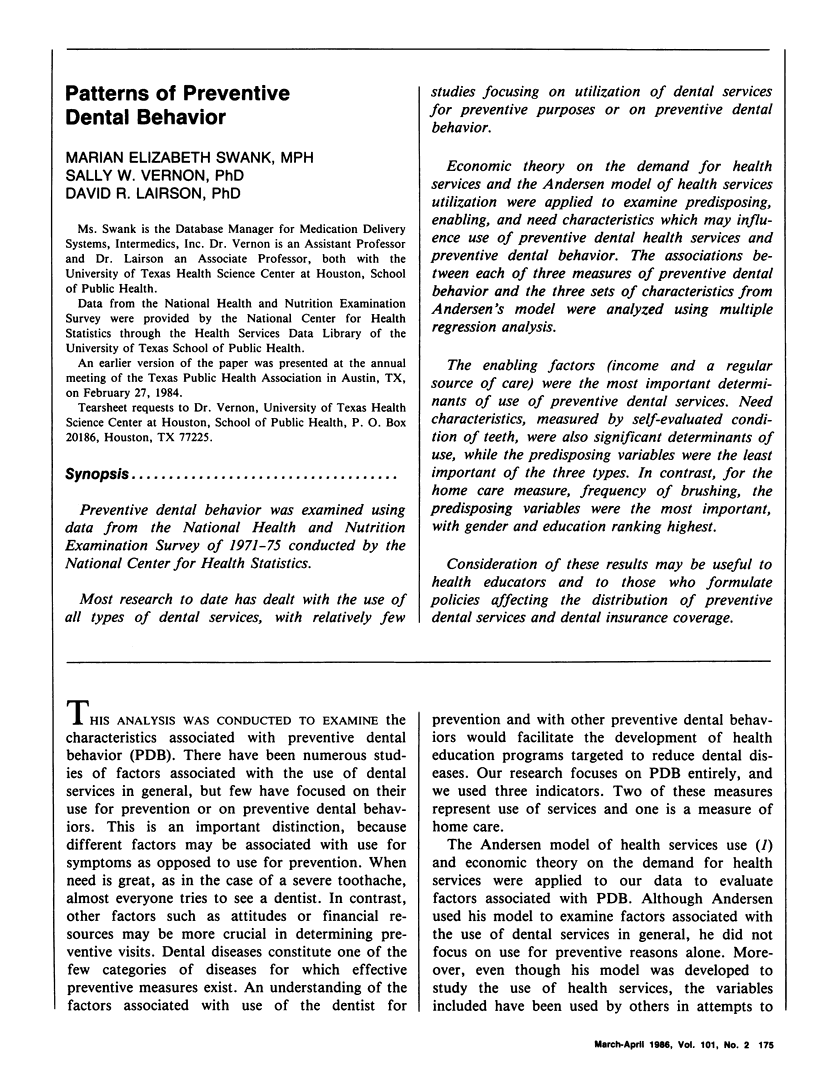
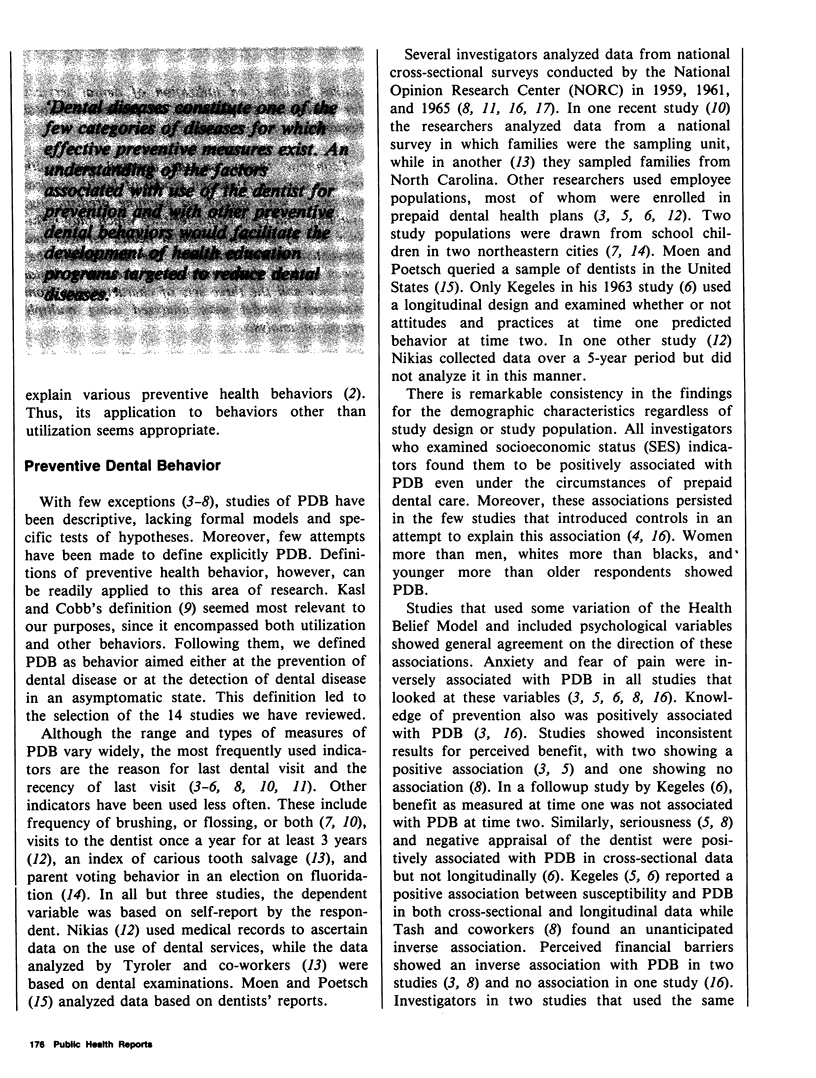
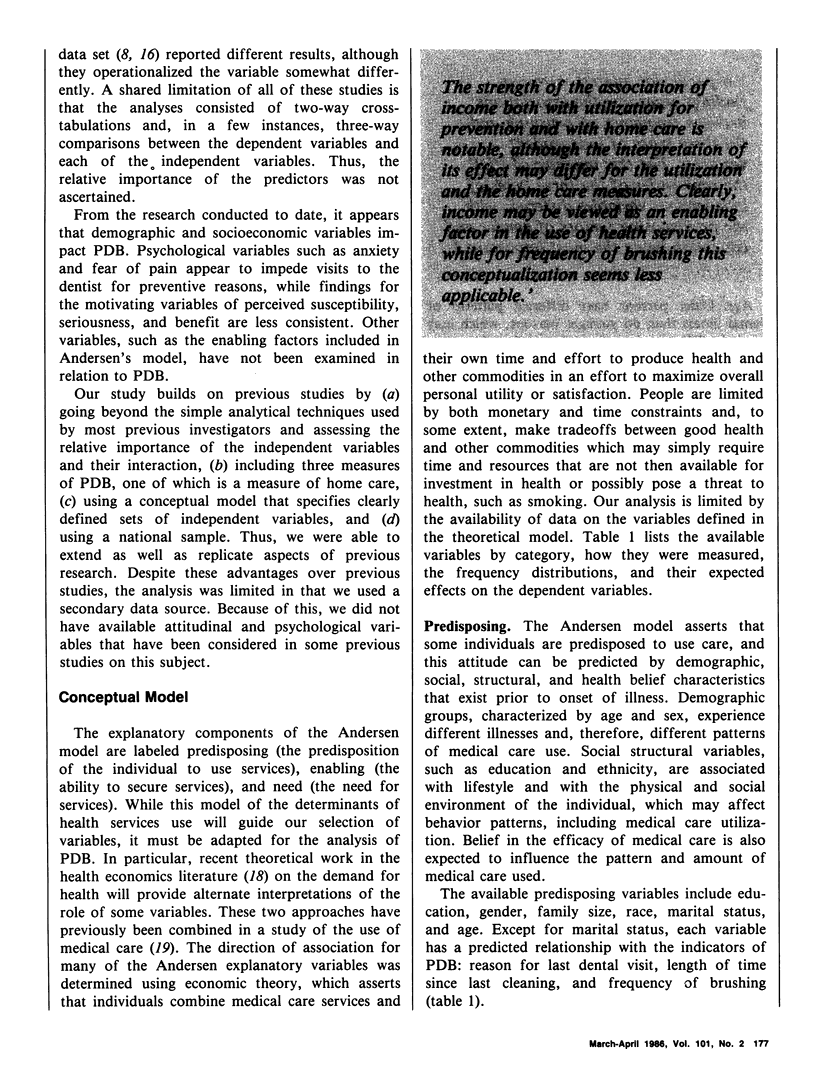

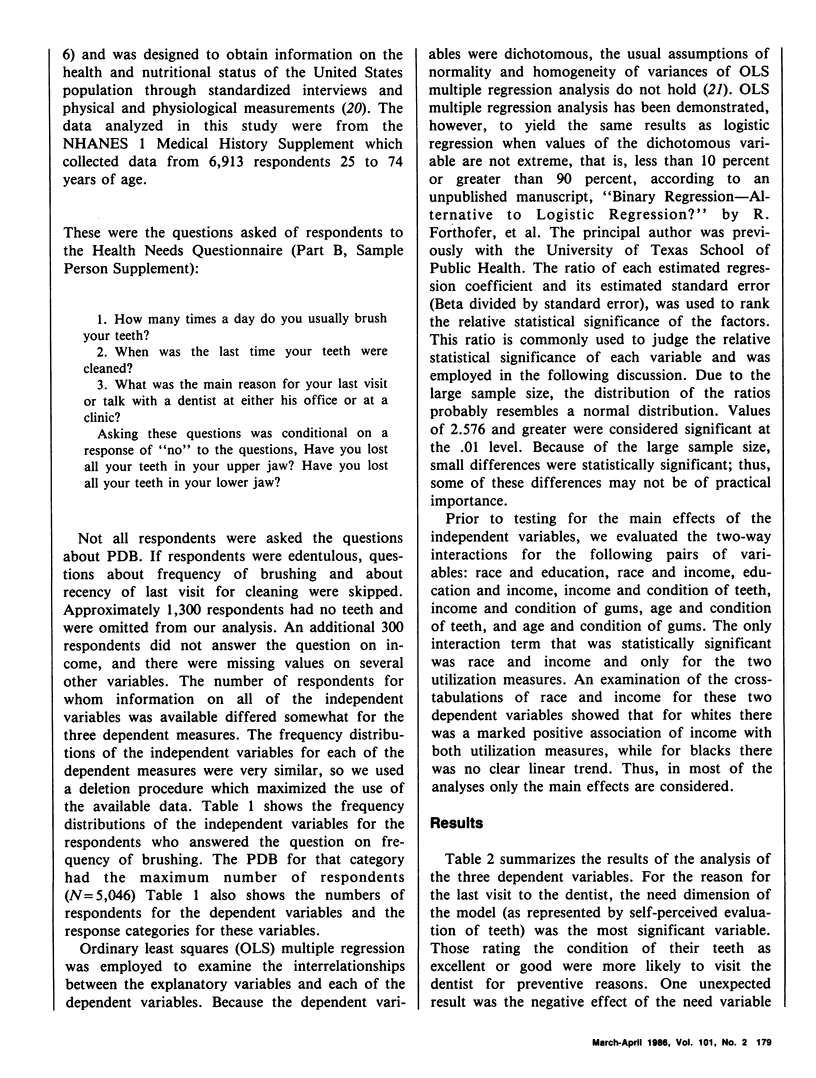
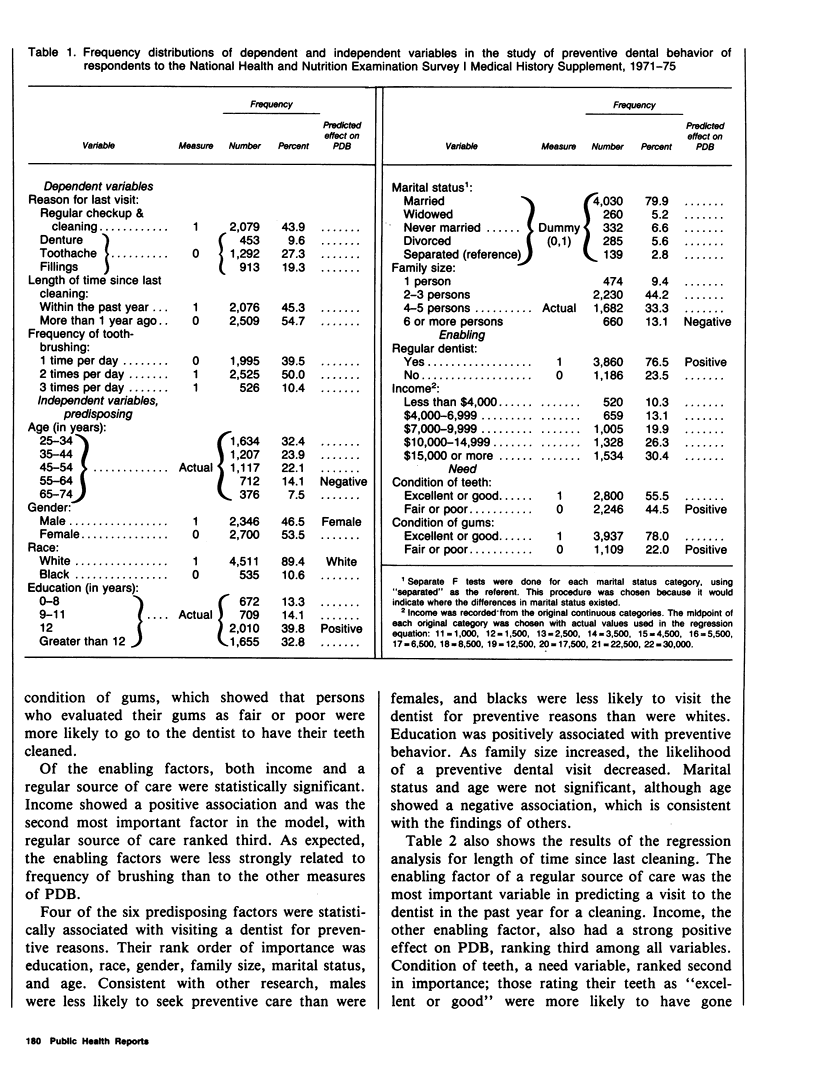
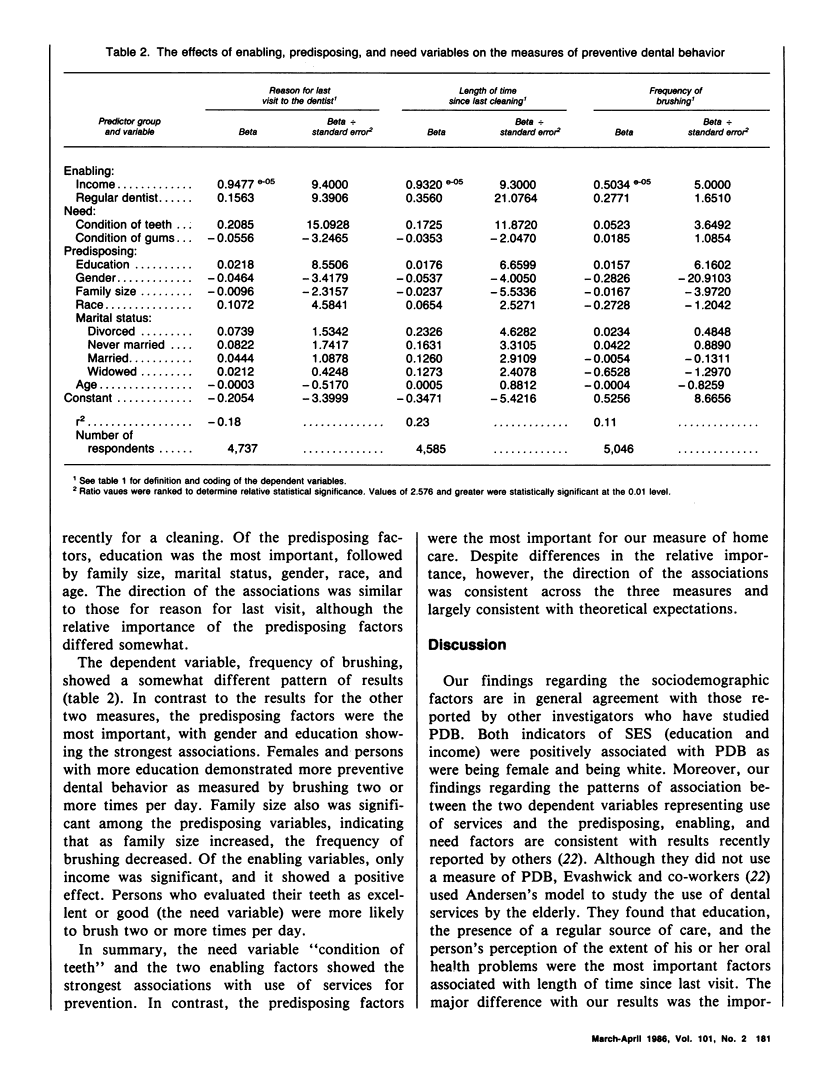
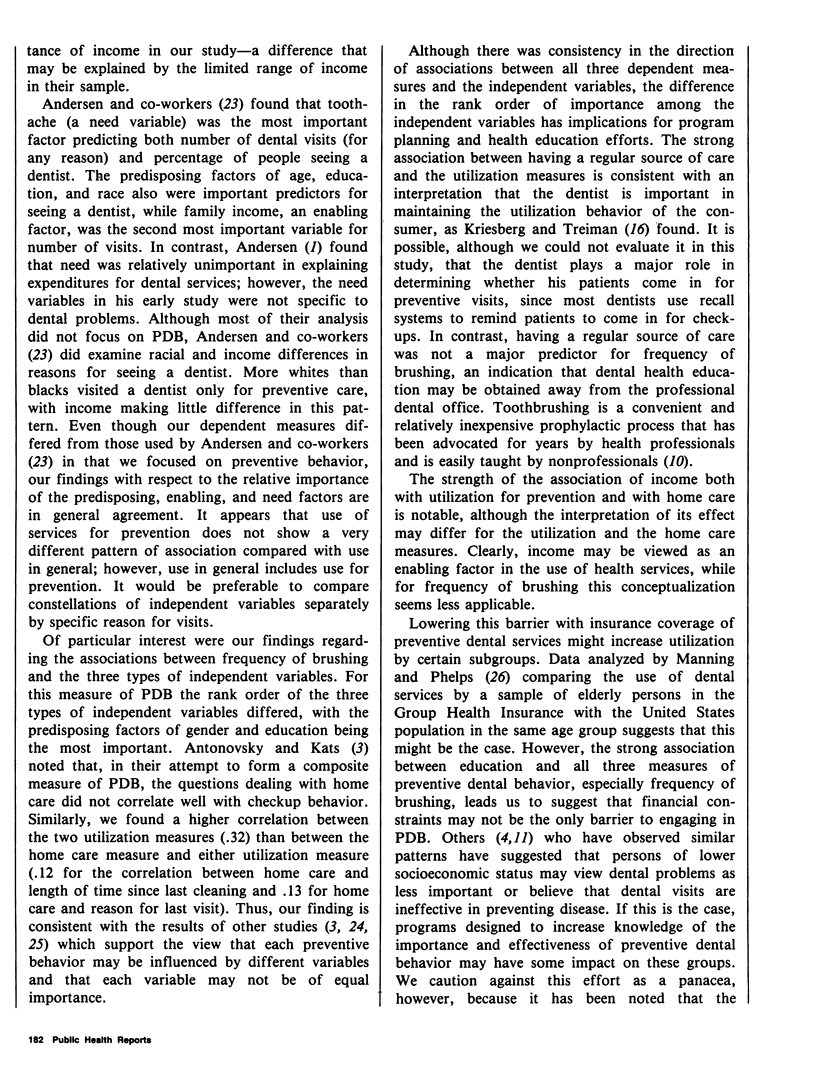
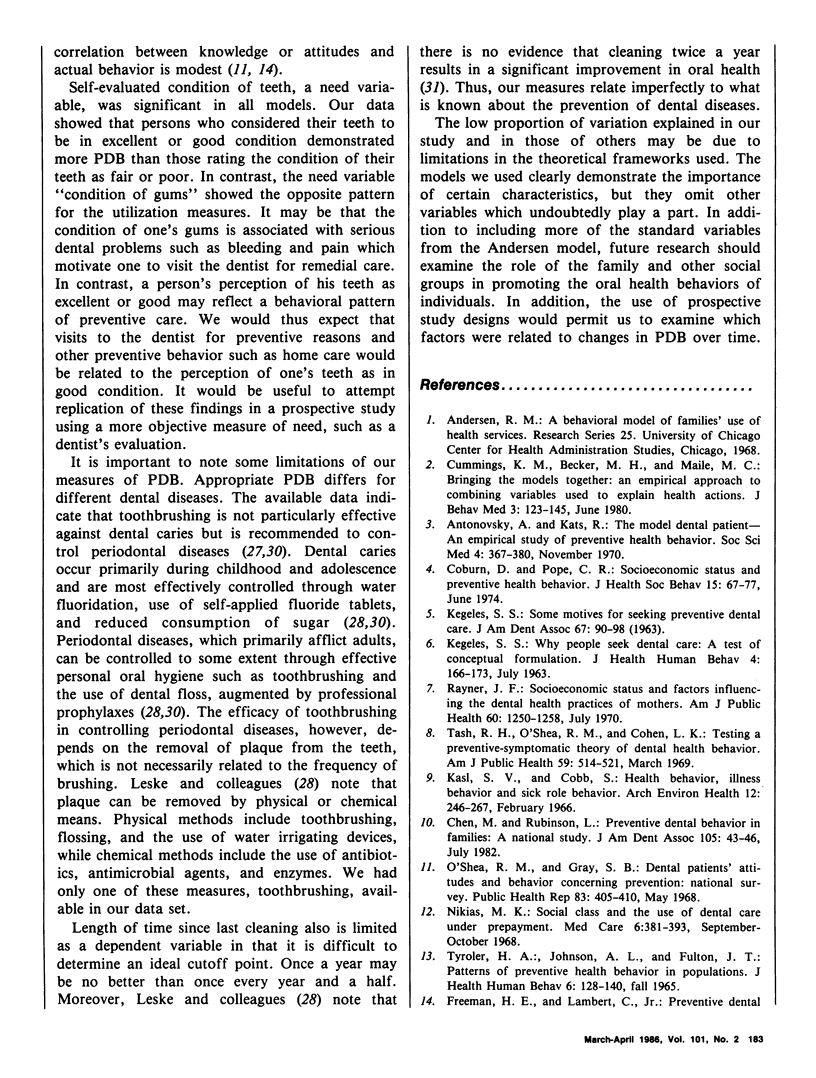
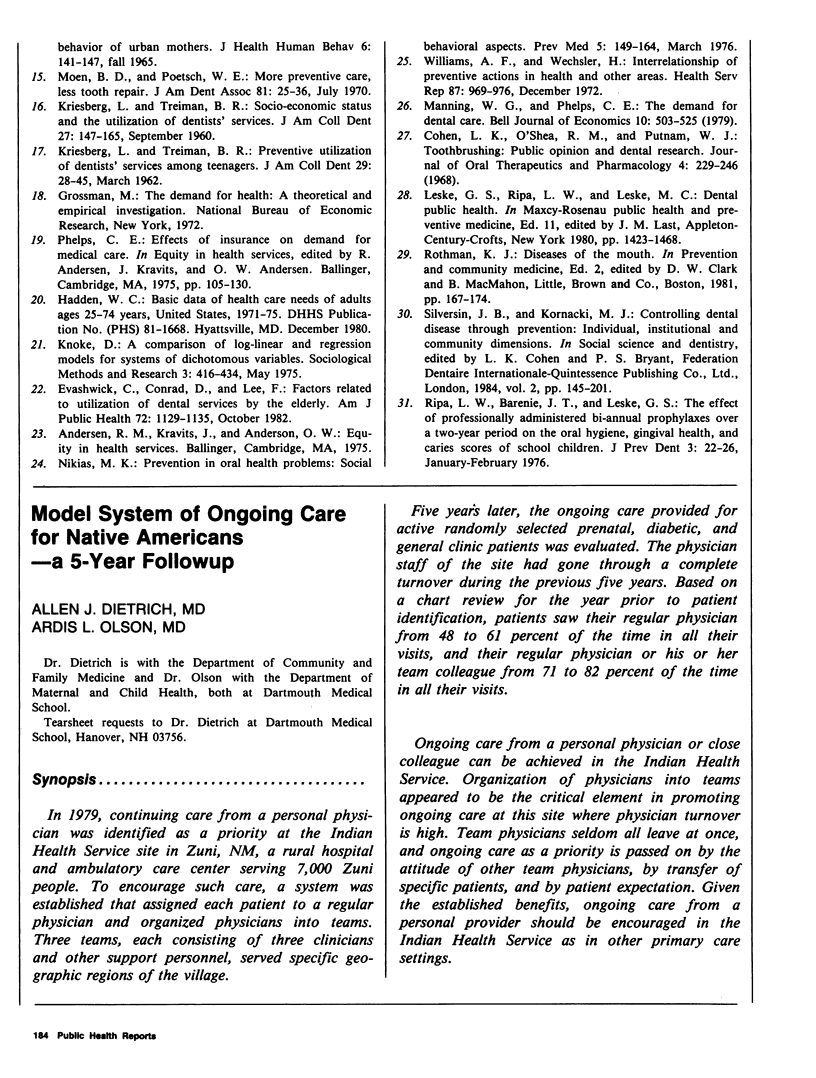
Selected References
These references are in PubMed. This may not be the complete list of references from this article.
- Antonovsky A. The model dental patient. An empirical study of preventive health behavior. Soc Sci Med. 1970 Nov;4(4):367–380. doi: 10.1016/0037-7856(70)90075-2. [DOI] [PubMed] [Google Scholar]
- Chen M. S., Rubinson L. Preventive dental behavior in families: a national survey. J Am Dent Assoc. 1982 Jul;105(1):43–46. doi: 10.14219/jada.archive.1982.0072. [DOI] [PubMed] [Google Scholar]
- Coburn D., Pope C. R. Socioeconomic status and preventive health behavior. J Health Soc Behav. 1974 Jun;15(2):67–78. [PubMed] [Google Scholar]
- Cohen L. K., O'Shea R. M., Putnam W. J. Toothbrushing: public opinion and dental research. J Oral Ther Pharmacol. 1967 Nov;4(3):229–246. [PubMed] [Google Scholar]
- Cummings K. M., Becker M. H., Maile M. C. Bringing the models together: an empirical approach to combining variables used to explain health actions. J Behav Med. 1980 Jun;3(2):123–145. doi: 10.1007/BF00844986. [DOI] [PubMed] [Google Scholar]
- Evashwick C., Conrad D., Lee F. Factors related to utilization of dental services by the elderly. Am J Public Health. 1982 Oct;72(10):1129–1135. doi: 10.2105/ajph.72.10.1129. [DOI] [PMC free article] [PubMed] [Google Scholar]
- KEGELES S. S. Some motives for seeking preventive dental care. J Am Dent Assoc. 1963 Jul;67:90–98. doi: 10.14219/jada.archive.1963.0231. [DOI] [PubMed] [Google Scholar]
- KEGELES S. S. WHY PEOPLE SEEK DENTAL CARE: A TEST OF A CONCEPTUAL FORMULATION. J Health Hum Behav. 1963;4:166–173. [PubMed] [Google Scholar]
- Kasl S. V., Cobb S. Health behavior, illness behavior, and sick role behavior. I. Health and illness behavior. Arch Environ Health. 1966 Feb;12(2):246–266. doi: 10.1080/00039896.1966.10664365. [DOI] [PubMed] [Google Scholar]
- Moen B. D., Poetsch W. E. Survey of dental services rendered, 1969. More preventive care, less tooth repair. Bureau of Economic Research and Statistics. J Am Dent Assoc. 1970 Jul;81(1):25–36. doi: 10.14219/jada.archive.1970.0144. [DOI] [PubMed] [Google Scholar]
- Nikias M. K. Prevention in oral health problems: social behavioral aspects. Prev Med. 1976 Mar;5(1):149–164. doi: 10.1016/0091-7435(76)90017-7. [DOI] [PubMed] [Google Scholar]
- O'Shea R. M., Gray S. B. Dental patients' attitudes and behavior concerning prevention. Public Health Rep. 1968 May;83(5):405–410. [PMC free article] [PubMed] [Google Scholar]
- Rayner J. F. Socioeconomic status and factors influencing the dental health practices of mothers. Am J Public Health Nations Health. 1970 Jul;60(7):1250–1258. doi: 10.2105/ajph.60.7.1250. [DOI] [PMC free article] [PubMed] [Google Scholar]
- Ripa L. W., Barenie J. T., Leske G. S. The effect on professionally administered bi-annual prophylaxes on the oral hygiene, gingival health, and caries scores of school children. Two year study. J Prev Dent. 1976 Jan-Feb;3(1):22–26. [PubMed] [Google Scholar]
- Tash R. H., O'Shea R. M., Cohen L. K. Testing a preventive-symptomatic theory of dental health behavior. Am J Public Health Nations Health. 1969 Mar;59(3):514–521. doi: 10.2105/ajph.59.3.514. [DOI] [PMC free article] [PubMed] [Google Scholar]
- Tyroler H. A., Johnson A. L., Fulton J. T. Patterns of preventive health behavior in populations. J Health Hum Behav. 1965 Fall;6(3):128–140. [PubMed] [Google Scholar]
- Williams A. F., Wechsler H. Interrelationship of preventive actions in health and other areas. Health Serv Rep. 1972 Dec;87(10):969–976. [PMC free article] [PubMed] [Google Scholar]


